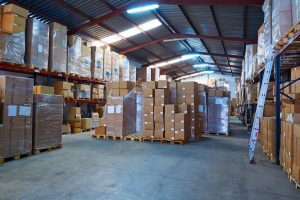Existing businesses go abroad for one or both the following reasons:
- To maximize profits and sales
- To protect their economic viability from the competition
Some businesses make their initial entry into a foreign market by exporting. Then they set up foreign sales companies. Finally, if the sales volume warrants it, they establish foreign production facilities.
Other businesses decide to get involved in importing to take advantage of lower manufacturing costs, to protect themselves from lower-priced imports being sold in the U.S., and to remain competitive with other companies that do business in the U.S.
Most businesses that are not exporting to sell products, importing to reduce costs, and competing on a global basis will have difficulty surviving.
Increasing Sales and Profits
Managers are under constant pressure to increase sales and make their companies more profitable. After a while, most businesses reach a point where they can only sell so much — the market is saturated with the product. When a business reaches this point, it needs to look for new people to sell its product to. Businesses often begin looking for ways to sell their products overseas.
Exporting gives a company the opportunity to increase sales and generate additional revenues, and importing provides access to low-cost sources of supply.
Making Use of Trade Agreements
Trade agreements involve a small group of countries getting together to establish a free-trade area among themselves while maintaining trade restrictions with all other nations. These agreements provide improved market access for consumer, industrial, and agricultural products from the U.S.
Trade agreements can also help businesses enter and compete more easily in the global marketplace. They help level the international playing field and encourage foreign governments to adopt open rule-making procedures as well as laws and regulations that do not discriminate. Free-trade agreements (FTAs) help strengthen business climates by eliminating or reducing tariff rates, improving intellectual property regulations, opening government procurement opportunities, and easing investment rules.
These agreements provide the following benefits to small and medium-size exporters:
- They reduce high tariffs on U.S. exports, which lower the cost of selling to customers overseas.
- They maximize small-business resources by eliminating inconsistent Customs procedures and improving and reducing burdensome paperwork.
- They minimize risks in foreign markets by providing certainty and predictability for U.S. small-business owners and investors.
- They enforce intellectual property rights.
- They promote the rule of law so that small businesses know what the rules are and that they will be applied fairly and consistently.
U.S. importers also benefit from such trade agreements.
Just as the countries with which the U.S. has a trade agreement have to provide improved market access for American goods, the U.S. must provide similar considerations to the countries with which the U.S. has an agreement. So an importer that deals with countries the U.S. has agreements with, will experience the elimination or reduction of tariff rates.
In order for an importer to take advantage of the preferential duty rates offered by free-trade agreements, the following conditions must apply:
- The goods must be imported directly from the beneficiary country (the country that has signed and is part of the agreement) to the U.S.
- The good must be manufactured in the beneficiary country. This condition is met if the goods are wholly produced or manufactured in the country or if the goods have been substantially transformed into a new article in the country.
In order for an item to change its country of origin, the value added in the beneficiary country needs to be 35 percent. For example, say a company in Mexico imports absorbent gauze from China. Upon receipt of the gauze, the Mexican company cutes the gauze into pieces and sews the pieces into medical sponges used in the operating room. Then the Mexican company washes, wraps, and sterilizes the sponges. Now, even though the initial gauzes came from China, it has been redefined as a product from Mexico — as long as someone can show at least 35 percent of the sponges’ value was added during the production process in Mexico. A U.S. importer of those sponges would then be able to benefit from preferential duty rates.
Countries that Have Trade Agreements with the U.S.
The U.S. has trade agreements with the following countries:
- North America: Canada and Mexico, under the North American Free Trade Agreement (NAFTA)
- Central American and the Caribbean: Costa Rica, Dominican Republic, El Salvador, Guatemala, Honduras, and Nicaragua, under the Dominican Republic-Central America-United States Free Trade Agreement (CAFTA-DR); Panama, under the United States-Panama Free Trade Agreement
- South America: Chile, under the United States-Chile Free Trade Agreement; Colombia, under the United State-Colombia Free Trade Promotion Agreement, Peru, under the United State-Peru Trade Promotion Agreement
- Australia: Australia, under the United States-Australia Free Trade Agreement
- Asia: Korea, under the United States-Korea Free Trade Agreement; Singapore, under the United States- Singapore Trade Agreement
- Middle East/North Africa: Bahrain, under the United States-Bahrain Free Trade Agreement; Israel, under the United States-Israel Free Trade Agreement; Jordan, under the United States-Jordan Free Trade Agreement; Morocco, under the United States-Morocco Free Trade Agreement; Oman, under the United States-Oman Free Trade Agreement
The United States is still in the process of negotiation a regional FTA, the Trans-Pacific Partnership, with Australia, Brunei Darussalam, Canada, Chile, Malaysia, Mexico, New Zealand, Peru, Singapore, and Vietnam.
You can access complete details on these trade agreements here.




